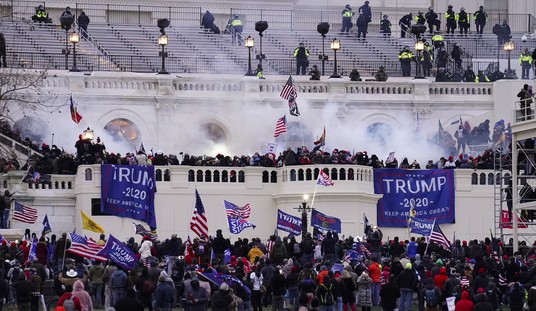I think the picture is more complicated than that. And that the demise of the Republican Party is no more foreordained than it was a century ago when Italian, Jewish and Polish immigrants were pouring into the United States in proportions much greater than the Hispanic and Asian immigration of the past two decades.
The numbers do appear stark. The Census tells us that 16 percent of U.S. residents are Hispanic, up from 13 percent in 2000 and 9 percent in 1990, and that 5 percent are Asian, up from 4 percent in 2000. The percentage of blacks held steady at 13. Among children, the voters of tomorrow, those percentages are higher.
But it's a mistake to see blacks, Hispanics and Asians as a single "people of color" voting bloc. The 2010 exit poll shows that the Republican percentages in the vote for the U.S. House were 60 percent among whites, 9 percent among blacks, 38 percent among Hispanics and 40 percent among Asians.
Simple arithmetic tells you that Hispanics and Asians vote more like whites than like blacks. The picture is similar in the 2008 exit poll.
Moreover, while blacks vote similarly in just about every state, there is wide variation among Hispanics. In 2010 governor elections, Hispanics voted 31 percent Republican in California, 38 percent Republican in Texas and 50 percent Republican in Florida (where Cubans are no longer a majority of Hispanics).
As RealClearPolitics senior political analyst Sean Trende has written, Hispanics tend to vote 10 percent to 15 percent less Republican than whites of similar income and education levels. An increasingly Hispanic electorate puts Republicans at a disadvantage, but not an overwhelming one.
Recommended
The same is true of Asians. In 2010, Democratic Sen. Harry Reid got 79 percent from Asians in Nevada, where many are Filipinos. But the Asians in Middlesex County, N.J., most of whom are from India, seem to have voted for Republican Gov. Chris Christie in 2009.
The 2010 Census tells something else that may prove important: There's been a slowdown of immigration since the recession began in 2007 and even some reverse migration. If you look at the Census results for Hispanic immigrant entry points -- East Los Angeles and Santa Ana, Calif., the east side of Houston, the Pilsen neighborhood in Chicago -- you find that the Hispanic population has dropped sharply since 2000.
One reason is the business cycle. The 2000 Census was taken on April 1, 2000, less than a month after the peak of the tech boom. Unemployment was low, immigration was high, and entry-point houses and apartments were crammed with large families.
The 2010 Census was taken after two years of recession, when immigration had slackened off. We simply don't know whether this was just a temporary response to the business cycle or the beginning of a permanent decline in migration.
Past mass migrations, which most experts expected to continue indefinitely, in fact ended abruptly. Net Puerto Rican migration to New York City stopped in 1961, and the huge movement of Southern blacks to Northern cities ended in 1965. Those who extrapolate current trends far into the future end up being wrong sooner or later.
Finally there is an assumption -- which is particularly strong among those who expect a majority "people of color" electorate to put Democrats in power permanently -- that racial consciousness never changes. But sometimes it does.
American blacks do have common roots in slavery and segregation. But African immigrants don't share that heritage, and Hispanics come from many different countries and cultures (there are big regional differences just within Mexico). The Asian category includes anyone from Japan to Lebanon and in between.
Under the definitions in use in the America of a century ago, when Southern and Eastern European immigrants were not regarded as white, the United States became a majority non-white nation sometime in the 1950s. By today's definitions, we'll become majority non-white a few decades hence.
But that may not make for the vast cultural and political change some predict. Not if we assimilate newcomers, and if our two political parties adapt, as we and they have done in the past.

























Join the conversation as a VIP Member